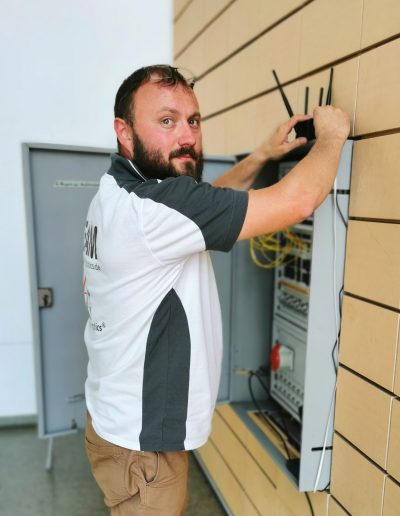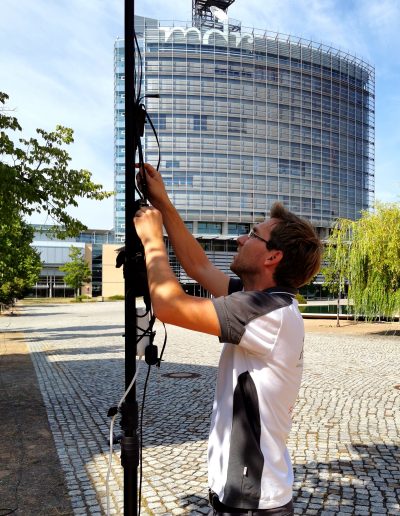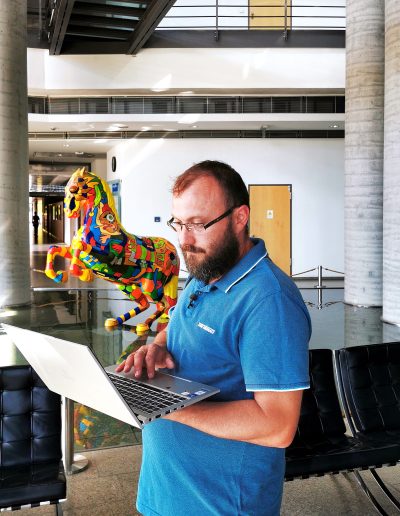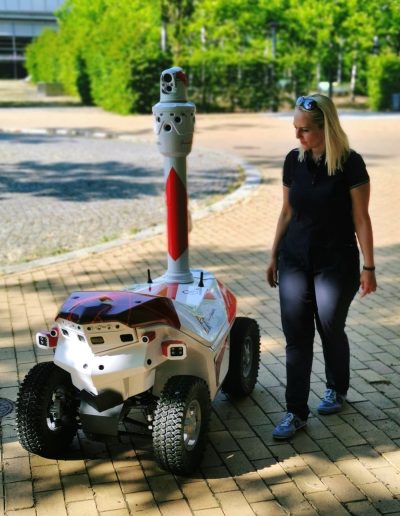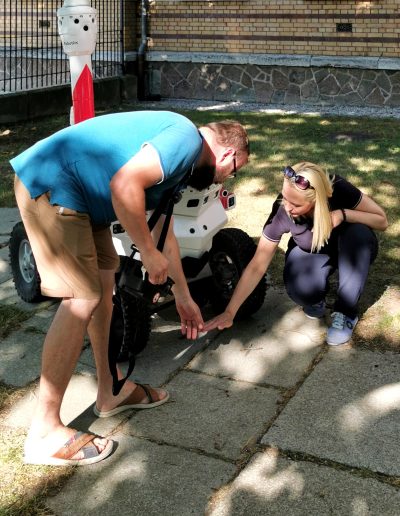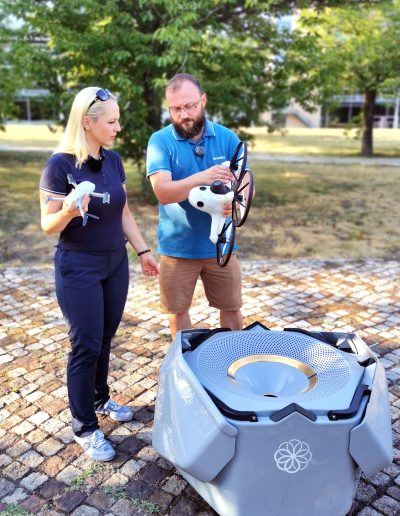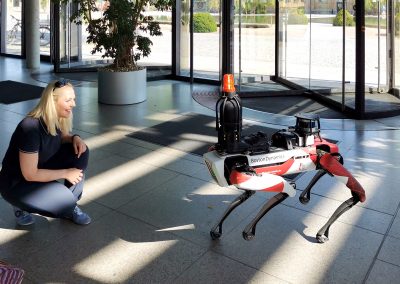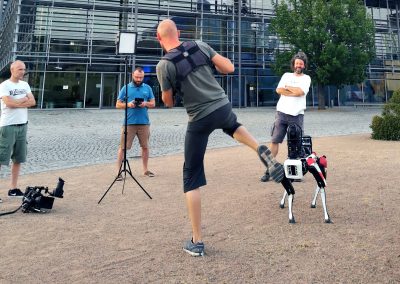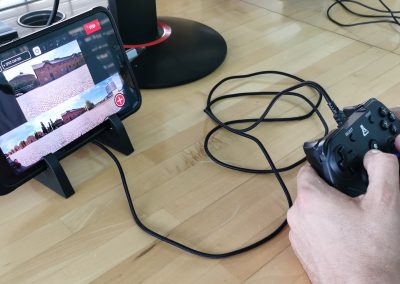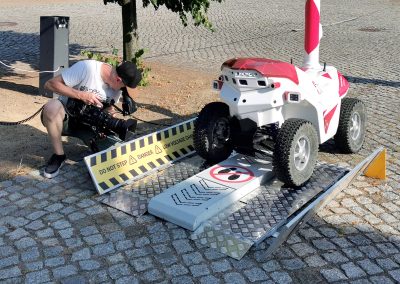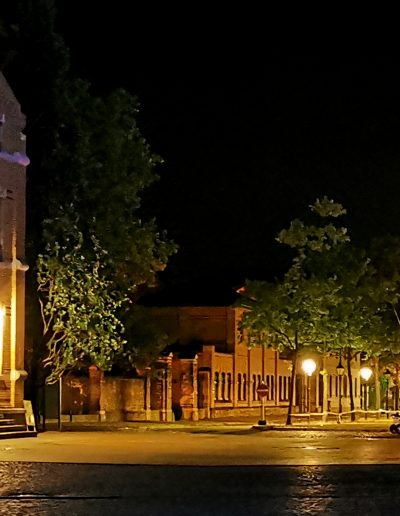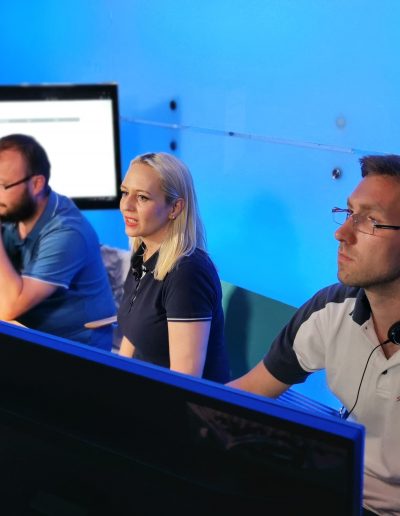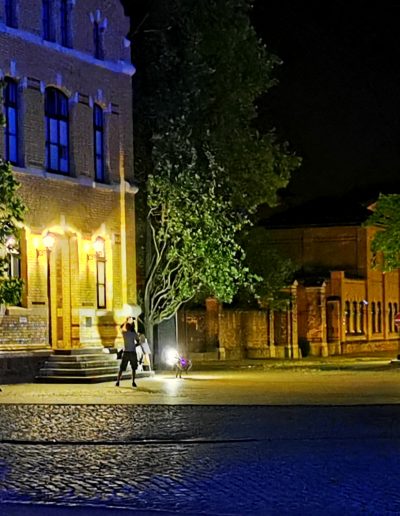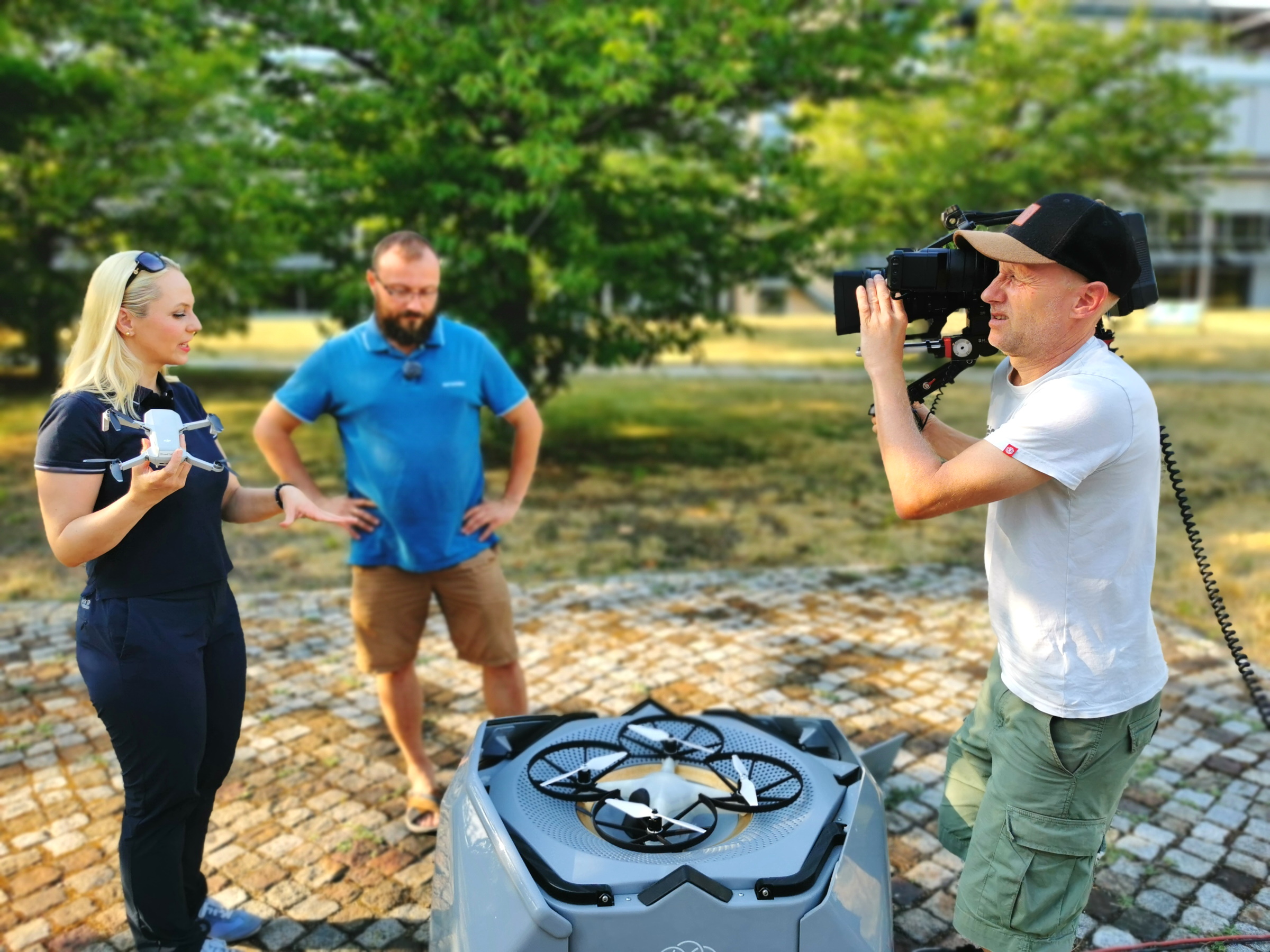
Many company homepages are emblazoned with terms such as agile, innovative, flexible, customer-oriented and they refer to presenting THE individual solution as a matter of course & at lightning speed. But often the “lightning speed” turns into lengthy projects, countless preparations have to be made until everything works as desired. Does it have to be like that?
Our core services include Software as a Service (Saas) and Robot as a Service (RaaS), an approach that basically requires a high degree of flexibility in thinking and acting thanks to a wide variety of customers, locations, projects, networks, interfaces, etc. The Security Robotics team was once again put to the test during a long and hot day of shooting in the middle of booming Leipzig. And what do you think, how successful and “lightning fast” were we?
Whether a local or a Leipzig tourist, every visitor to the trade fair city is probably familiar with the sight of the MDR high-rise. Visually modelled on a TV screen, the headquarters of Mitteldeutscher Rundfunk (Central German Broadcasting) soars 13 storeys high south of the city centre. 25 years ago, the most modern ARD broadcasting station was built on the site of a nationally owned GDR slaughterhouse. Many an old hall had to make way for the new building, but what remains are historic brick buildings, a small park and a very extensive area.
Mainly news programmes, various entertainment series and, in our case, an episode for the MDR format “Einfach Genial” are produced here. This programme aims to present innovations, cool inventions and simply remarkable things from central Germany, from the practical ideas of “small” amateur inventors to globally relevant approaches. So it’s no wonder that “the boys with the robots” also caught their attention and we received an enquiry a few weeks before filming began.
We had already gained experience with recording teams from regional stations, MDR aktuell, radio programmes etc. and were therefore looking forward to what was to come. Dr. Köhler, an editor at Maximus Film, the production company behind features for Galileo, the Discovery Channel and various MDR programmes, visited our test site, met our team, inspected the robots and quickly developed an idea for the design of the TV feature. Scheduled as a complete day of filming, the robotic solutions were to be presented on our premises and shown in joint action. In addition, there were some interviews, close-ups, etc., nothing that we hadn’t already shown and done several times.
But if you want to present something in the best possible way to those viewers who have not yet had any contact with security robots, sometimes you have to think and do things differently. And so the filming location changed to the MDR premises, the filming time to day + night and, as a treat on top, it would be our task to uncover a (planned) theft.
Tuesday morning. One day before the start of the shoot, Mr. Köhler showed us around the area and we got an impression of its size, the many corners, traffic-heavy zones, areas that were to be used for the shoot and others that were to be left out. Securing such an intricate area is something quite different from the classic factory building and its perimeter. Above all, it became clear that we could not rely on stable network or WLAN coverage.
Let’s summarise: We didn’t fully know the terrain, had poor geo-data, unreliable communication lines and little time to set up networks, create patrol routes, conduct test runs, set up a command centre, demonstrate all the robots and finally catch a wrongdoer in the act: in the pitch dark. Sounded like a challenging and exciting day 🙂
Wednesday morning, shooting day: We had already loaded one van the night before, the second one followed. We packed monitors, cables, masts, tools, charging stations, batteries, laptops, the robots themselves and all kinds of odds and ends into the vans to the maximum, then we were off to the south of Leipzig. To add some spice to the day, we were expecting the hottest temperatures to date with almost 40°C…in the shade! A real test for man and material.
Wednesday afternoon. We treated ourselves to a light meal in the MDR canteen and enjoyed the shady seating. But there wasn’t too much break time, because the start of filming, 4 p.m., was fast approaching. So out into the sun again. In the meantime, we had defined a launch site for the BEEHIVE drone system and drawn a virtual fence around the permitted flying area. Outside of this, nothing exists for the flying robot, it can neither fly there nor see / record anything. The charging stations of ARGUS and SPOT were placed very centrally and thus ensured enduring missions, after all, the robots independently head for these positions and supply themselves with fresh energy.
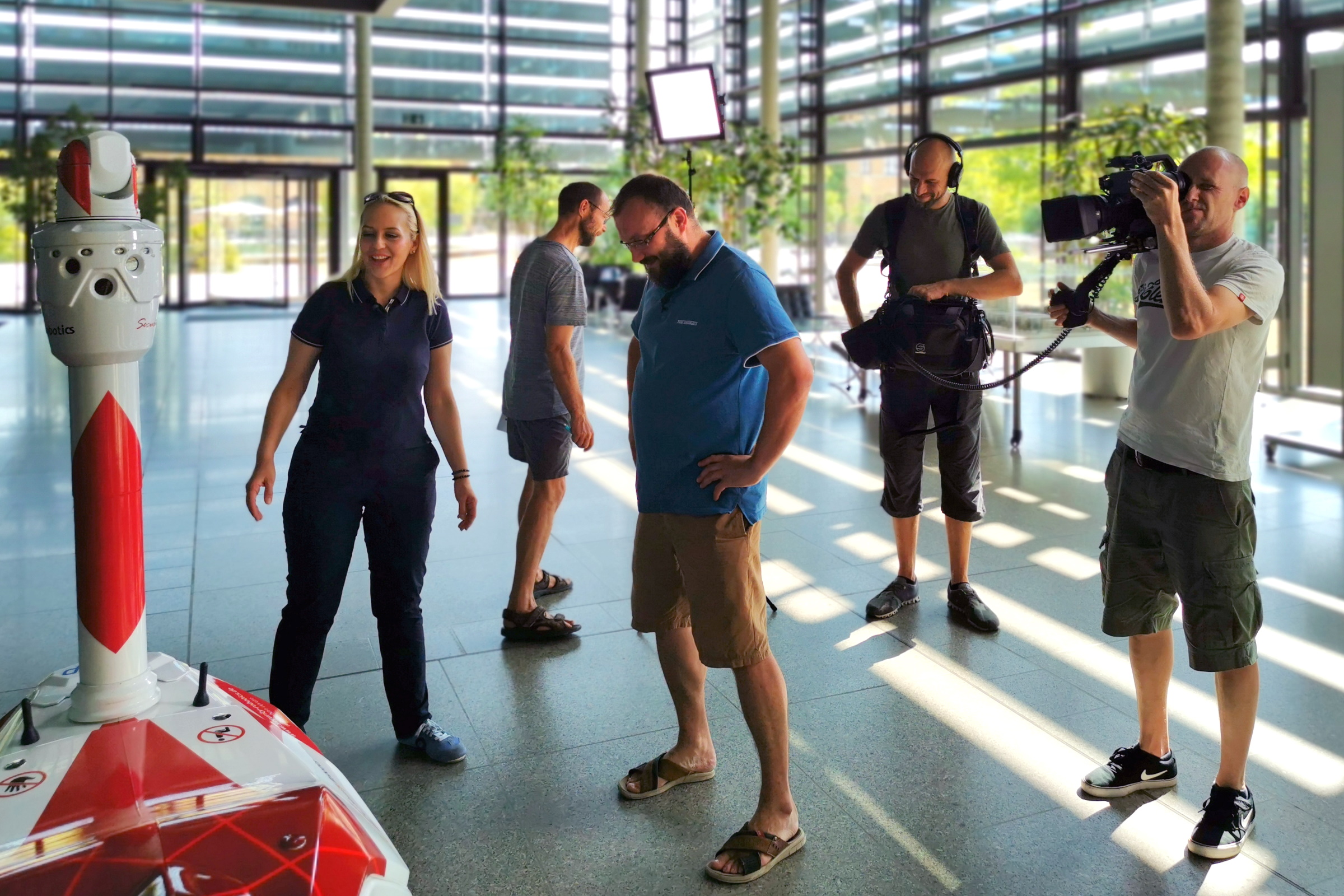
Wednesday afternoon, 4 pm. We met up punctually with the filming team, consisting of two cameramen, a sound technician, the director Mr Köhler and the presenter of “Einfach Genial” Henriette Fee Grützner. Probably every film wants to build up an arc of tension, tell a story and feel “round”. Therefore, it was decided to shoot various scenes, introductions, individual shots with the robots in various environments, indoors and outdoors, robots demonstrating their off-road capabilities, etc. The technicians made their work very routinely. Very routinely, the technicians made their equipment ready for use, then on to scene 1.
Wednesday evening, 9 pm, twilight time. Despite the scorching sun and occasional minor technical obstacles, most of the scenes were in the can. ARGUS, SPOT and BEE reliably demonstrated their skills, drove, ran, flew and allowed themselves to be marvelled at, guided over stumbling blocks and also manually controlled by Henriette. We explained details, including networking, software development and the integration of robots into existing safety solutions. We talked intensively about the core service of Security Robotics, which is not the sale of robots, but the software development of platform solutions to make integration, machine-to-machine communication and networking possible and usable in the long term.
Wednesday, 11 pm. For the highlight of the day and as practical proof of the efficiency of robotic security systems, a test had been devised. An unreal offender, of course, who was himself a security expert and worked in the industry, i.e. knew all the tricks, would try to enter the guarded area undetected and steal objects from a box. Our task was to establish the offence and inform the control centre about it. To be fair, the young man had not only informed himself about the robots’ capabilities, but had also probed the terrain. So he knew where which systems were operating, how far their sensors reached and what data we were getting on our monitors.
Wednesday, midnight. Henriette and the three of us sat at the monitors of our makeshift operations centre and waited until the culprit would approach the stolen goods in accordance with his mission. Meanwhile, ARGUS followed its programmed route, SPOT ran to various neuralgic hotspots and BEE launched regularly for air patrol. The overlapping sensor areas and various camera types (normal light, 360°, residual light, infrared, etc.) provided us with a comprehensive picture of the situation in the interaction of the robots. But the culprit was also clever. Again and again, he appeared only very briefly at the edge of the action, retreated again, bypassed the individual robots and stalked closer and closer to the object. Finally, skilfully using the many bushes, trees and shady corners, he reached the box, thought he was safe & opened it.
At that very moment, in the act, so to speak, we intervened. The hooded man had long since been spotted by drone, marked and reported to the control centre, which immediately sent another robot on its way. This is a common procedure to verify potential alarms and intervene when necessary. While the security robots normally follow their routines 100% reliably, unaffected by weather and temperature conditions or darkness, it has proven useful to also take direct control in the event of an alarm. The only difference was that in this case, no security guard set off, but SPOT walked purposefully to the alarm location. Surprised, the culprit tried to hide behind the box or at least avoid being identified. Recognised, identified and at that moment even spoken to live and loudly, he had no choice but to flee. Mission accomplished!
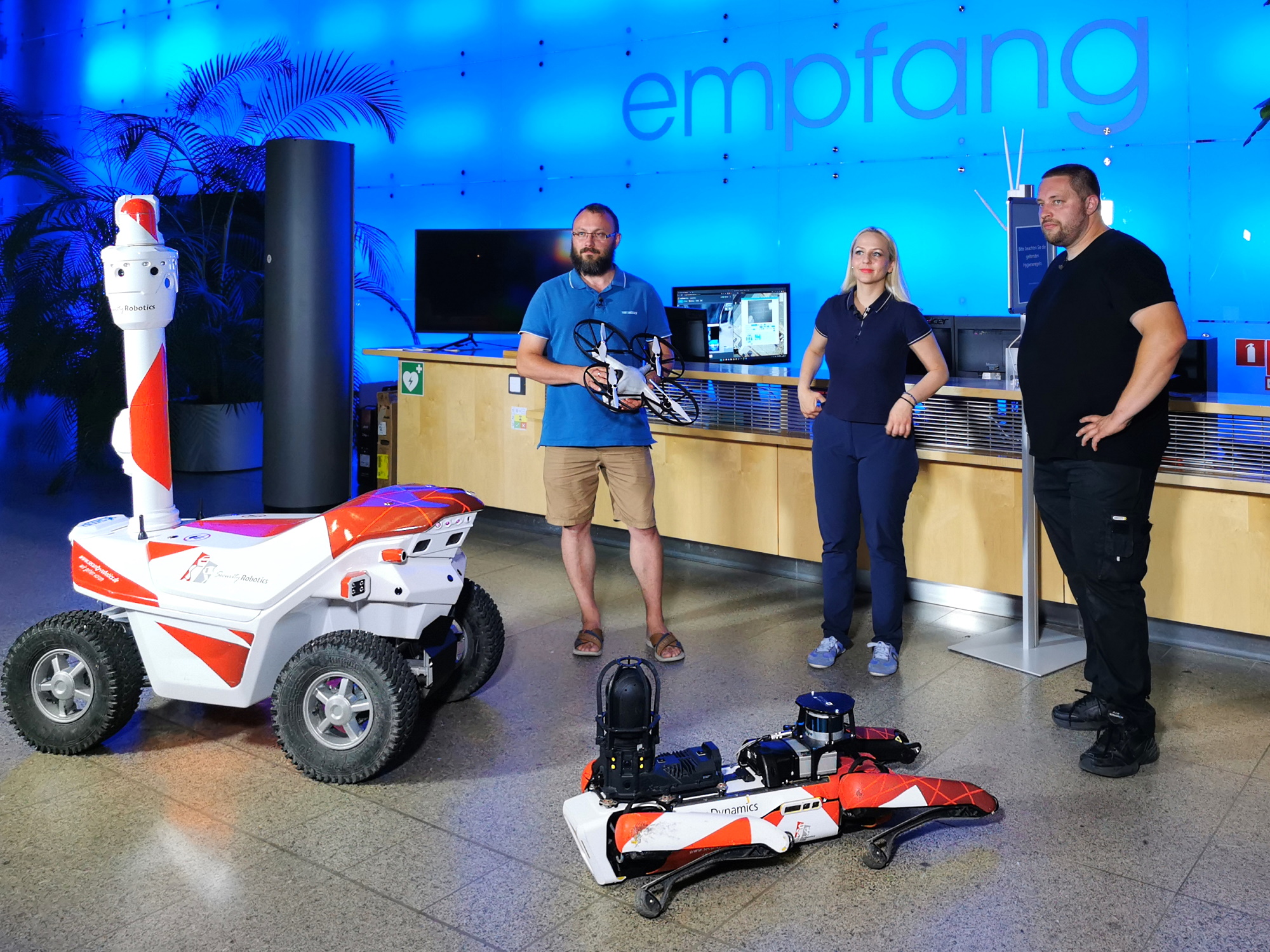
Thursday, very early in the morning. When, after intensive preparations and hours of shooting, the long day ends with a clear success, the tension literally falls off even the strongest shoulders. And so the now no longer “masked”, the shooting team and also our team gathered in the lobby of the MDR high-rise building. Here at the control centre, which we were able to set up in the perfect place thanks to the helpful support of the MDR building technicians (thanks guys!), we came together for a final scene and the “manoeuvre critique”.
In particular, the performer of the intruder was impressed by the skills of the networked robots and told us about the difficulties and sweaty attempts just entering and crossing the site. Again and again, he had to abandon advances, search for new paths and spend a lot of time. The misdeed failed after a few seconds and ended in a hasty escape. In the opinion of the security expert, a less well-prepared burglar would be discovered much more quickly and, it should be emphasised, by a makeshift security concept! It takes little imagination to realise what a complete, networked and to-the-point system of mobile security solutions is capable of: connected, supported and controlled by innovative platform software.
Thursday, 2 o’clock. 18 hours had passed, from loading the vans to parking them at our test site. Despite clear signs of fatigue, we left in a good mood and a little proud, because Security Robotics had shown what was possible.
Simply ingenious, isn’t it?
CONTACT FOR PRESS & COMMUNICATION:
Michael Engel | m.engel@security-robotics.de
Landsberger Allee 366, 12681 Berlin
Telefon: +49 341 2569 3369
